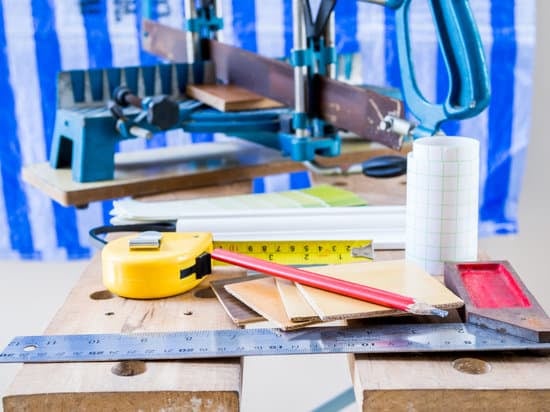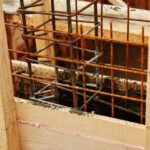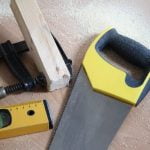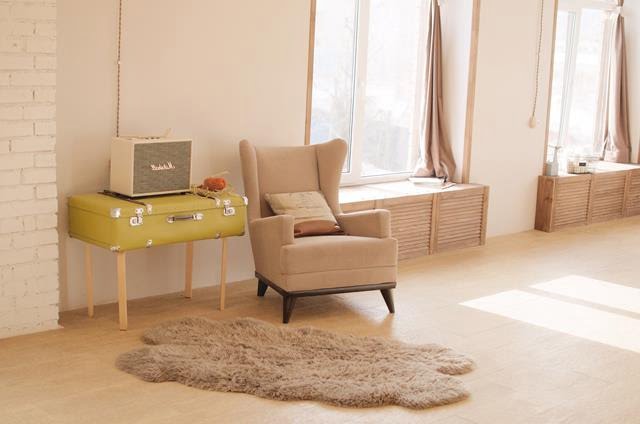Have you ever wondered if you can use your Thrift Savings Plan (TSP) loan for home improvement? Many individuals are unaware of the potential option to utilize their TSP loan for home renovation projects. This article will provide a detailed look into whether a TSP loan can be used for home improvement, as well as explore the benefits, risks, and considerations associated with this financing option.
First, it is essential to understand what a TSP loan is and its primary purpose. The Thrift Savings Plan (TSP) loan allows federal employees and members of the uniformed services to borrow money from their TSP accounts for various personal financial needs. While the primary intent of a TSP loan may be for general personal expenses, there is a possibility of using this type of loan specifically for home improvement purposes.
In the following sections, we will delve into a comprehensive explanation of what a TSP loan entails, eligibility requirements for applying, and ultimately focus on the specific topic of using a TSP loan for home improvement. Additionally, alternative financing options for home improvement projects will be explored to provide readers with a well-rounded understanding of their choices.
Whether you are considering utilizing your TSP loan or exploring other avenues, this article aims to equip you with the necessary information to make an informed decision regarding financing your home improvement endeavors.
What Is TSP Loan?
The Thrift Savings Plan (TSP) loan is a unique borrowing option available to federal employees through their TSP retirement account. It allows participants to borrow money from their TSP savings for various purposes, including home improvement projects.
When an individual takes out a TSP loan, they are essentially borrowing money from their own retirement savings and are required to pay it back with interest. The primary purpose of the TSP loan is to provide federal employees with access to funds in times of need, while also allowing them to continue saving for retirement.
To be eligible for a TSP loan, individuals must meet certain criteria set by the Federal Retirement Thrift Investment Board. These eligibility requirements include being currently employed by the federal government or the uniformed services and having enough vested balance in their TSP account to cover the requested loan amount.
Additionally, there are limits on how much can be borrowed from the TSP account, as well as restrictions on the number of loans that can be taken out at a time.
Using a TSP loan for home improvement has its advantages and disadvantages. On one hand, it provides federal employees with a convenient and relatively low-cost way to finance renovations or repairs to their homes. On the other hand, there are potential risks involved, such as reducing one’s retirement savings and facing tax implications if unable to repay the loan. Understanding these factors is essential for making informed decisions about using a TSP loan for home improvement purposes.
- Pros
- Convenient access to funds from own retirement savings
- Relatively low interest rates compared to other types of loans
- No credit check or approval process required
- Cons
- Potential impact on long-term retirement savings
- Risk of facing tax penalties if unable to repay the loan
- Restrictions on the amount that can be borrowed
TSP Loan for Home Improvement
The Thrift Savings Plan (TSP) loan is a program offered by the Federal Retirement Thrift Investment Board that allows federal employees to borrow money from their TSP accounts for certain purposes, including home improvement. This type of loan functions as a way for participants to access their own contributions and any earnings on those contributions.
The purpose of the TSP loan is to provide federal employees with a means of obtaining funds for specific needs without incurring penalties or taxes that may come with early withdrawals.
Eligibility Requirements for Applying for a TSP Loan
In order to be eligible to apply for a TSP loan for home improvement, federal employees must meet several requirements. First, they must be employed by the federal government or the uniformed services.
Second, they must have at least $1,000 in their TSP account and be actively contributing to it through payroll deductions. Additionally, individuals applying for a TSP loan should not have previously defaulted on a TSP loan unless they have repaid the full amount and accrued interest on prior loans.
Using TSP Loan for Home Improvement
One common question many individuals ask is “Can TSP loan be used for home improvement?” The answer is yes, participants in the plan can utilize a TSP loan to finance home improvement projects. However, there are both pros and cons associated with using this type of loan for such purposes.
On one hand, using a TSP loan allows individuals to access funds without needing to undergo credit checks or incurs high interest rates. On the other hand, withdrawing money from your retirement savings can potentially hinder your long-term financial security. It’s important for anyone considering using a TSP loan for home improvement to carefully weigh the advantages and disadvantages before making a decision.
Alternatives to TSP Loan for Home Improvement
When considering home improvement projects, the Thrift Savings Plan (TSP) loan is not the only option available for financing. There are several alternatives to TSP loans that individuals can explore to fund their home improvement projects. It’s important to weigh the pros and cons of each alternative to determine the best fit for your specific financial situation and needs.
Home Equity Line of Credit (HELOC)
One popular alternative to using a TSP loan for home improvement is obtaining a Home Equity Line of Credit (HELOC). A HELOC allows homeowners to borrow against the equity in their home, providing access to a line of credit that can be used for various expenses, including home improvements. This option may offer lower interest rates compared to other types of loans, making it a cost-effective choice for funding renovations or repairs.
Personal Loan
Another alternative to consider is taking out a personal loan for your home improvement projects. Personal loans are unsecured loans, meaning they do not require collateral such as your home or car. This can be beneficial for individuals who do not want to put their assets at risk. Personal loans also typically have fixed interest rates and predictable monthly payments, making it easier to budget for your home improvement expenses.
Cash-Out Refinance
For homeowners with significant equity in their property, a cash-out refinance may be an attractive option for financing home improvements. This involves refinancing your existing mortgage and taking out a new loan that is more than what you currently owe.
The excess funds can then be used for renovations or repairs. While this option allows you to tap into your home’s equity at potentially lower interest rates, it’s important to carefully consider the long-term implications of increasing your mortgage debt.
Exploring these alternatives alongside the possibility of using a TSP loan for home improvement can provide individuals with a clear understanding of their financing options and help them make informed decisions about how best to fund their renovation or repair projects. Each option has its own advantages and drawbacks, so it’s crucial to conduct thorough research and consult with financial professionals before committing to any particular financing method.
How to Use TSP Loan for Home Improvement
If you are considering using a TSP loan for home improvement, it is important to understand the process and requirements involved. Below is a step-by-step guide on how to apply for a TSP loan specifically for home improvement purposes:
1. Determine eligibility: Before applying for a TSP loan for home improvement, you must first ensure that you meet the eligibility requirements set by the Thrift Savings Plan. This includes being currently employed by the federal government or uniformed services and having at least $1,000 of your own contributions in the TSP.
2. Calculate the loan amount: The maximum amount that can be borrowed from the TSP for home improvement purposes is $50,000, with a minimum loan amount of $1,000. It is important to carefully calculate how much funding you will need for your home improvement project before applying for the loan.
3. Submit a loan application: Once you have determined your eligibility and calculated the desired loan amount, the next step is to submit a TSP loan application. This can typically be done through the TSP website or by contacting the Thrift Savings Plan directly.
4. Provide documentation: Along with your loan application, you may be required to provide documentation supporting the purpose of the loan, such as estimates or invoices from contractors for your home improvement project.
5. Repayment plan: It is crucial to consider how you will repay the TSP loan for home improvement. The repayment period can vary based on factors such as whether it is a general purpose or residential loan, so it’s important to carefully review and consider your options.
By following these steps and carefully considering all aspects of using a TSP loan for home improvement purposes, you can make an informed decision about whether this financing option is right for you and your specific project needs.
Benefits of Using TSP Loan for Home Improvement
Using a TSP loan for home improvement can provide several benefits for individuals looking to fund their renovation projects. One major advantage is the low interest rates offered by TSP loans, which are typically much lower than those of traditional personal loans or credit cards. This can result in significant cost savings over the life of the loan.
Additionally, TSP loans do not require a credit check, making them an attractive option for individuals with less-than-perfect credit. This accessibility can make it easier for individuals to secure funding for home improvement projects, especially if they have been unable to qualify for other types of loans in the past.
Another benefit of using a TSP loan for home improvement is the ability to repay the loan through payroll deductions, spreading the payments out over time and making it more manageable for borrowers. This steady repayment structure can help individuals budget for their home improvement expenses without experiencing substantial financial strain.
Overall, using a TSP loan for home improvement purposes can offer substantial cost savings and accessibility compared to other financing options. However, it is crucial that borrowers carefully consider both the benefits and potential risks before deciding to use a TSP loan for their renovation projects.
| Benefit | Explanation |
|---|---|
| Low Interest Rates | TSP loans offer lower interest rates than traditional personal loans or credit cards. |
| No Credit Check | Borrowers with less-than-perfect credit history can still access TSP loans. |
| Payroll Deductions | Repayment through payroll deductions helps in budgeting and makes payments more manageable. |
Risks and Considerations
Using a TSP loan for home improvement can be a convenient way to fund renovation projects, but it’s important to consider the risks and drawbacks before making this financial decision. One of the main risks of using a TSP loan for home improvement is that you are essentially borrowing from your future retirement funds.
This means that if you are unable to repay the loan, you could jeopardize your retirement savings. It’s crucial to assess whether the potential benefits of using a TSP loan for home improvement outweigh the long-term impact on your retirement finances.
Another consideration when using a TSP loan for home improvement is the impact on your current financial situation. While it may seem like an attractive option to access funds without going through a traditional lender, taking out a TSP loan can also affect your cash flow and overall financial stability. You will need to ensure that you have a plan in place to repay the loan without causing undue strain on your budget or other financial goals.
Additionally, there are tax implications associated with using a TSP loan for home improvement that should not be overlooked. If you are unable to repay the full amount of the loan, it may be treated as an early distribution and subject to taxes and penalties.
It’s important to understand how using a TSP loan for home improvement can potentially impact your tax liability in both the short term and long term. Before deciding to use a TSP loan for home improvement, carefully consider these factors and consult with a financial advisor if necessary to make an informed decision that aligns with your overall financial plan.
Case Studies
Using a Thrift Savings Plan (TSP) loan for home improvement can be a viable option for many individuals looking to fund renovation projects. One of the key advantages of using a TSP loan for home improvement is the relatively low interest rate compared to other forms of borrowing. Additionally, the repayment terms are often favorable, with the ability to repay the loan over a longer period of time.
One case study that exemplifies the use of a TSP loan for home improvement is that of John and Sarah, who wanted to renovate their kitchen. They decided to explore using their TSP account as a source of funding due to its low interest rates and flexible repayment options.
After careful consideration, they opted to take out a TSP loan and were able to complete their kitchen renovation within their budget and desired timeline. They found that using a TSP loan not only provided them with the necessary funds but also allowed them to avoid high-interest credit card debt.
Another example is the case of Martha, who utilized her TSP account to finance major repairs on her roof. She found that using a TSP loan made it possible for her to address urgent home maintenance needs without having to resort to more costly forms of borrowing. Ultimately, Martha was able to make timely repairs on her roof without incurring significant interest expenses.
These real-life examples illustrate how individuals can successfully use TSP loans for home improvement purposes. While there are certainly benefits to leveraging a TSP loan for renovations or repairs, it’s important for individuals considering this option to carefully weigh the potential risks and implications before making a decision.
| Case Study | Outcome |
|---|---|
| John and Sarah’s Kitchen Renovation | Successfully completed renovation within budget using a TSP loan; avoided high-interest credit card debt |
| Martha’s Roof Repairs | Utilized TSP loan for timely repairs without incurring significant interest expenses |
Conclusion
In conclusion, the Thrift Savings Plan (TSP) loan can indeed be used for home improvement projects. While it may offer a convenient and relatively low-cost financing option for homeowners, there are important considerations to keep in mind before tapping into your TSP account for this purpose.
The flexibility and favorable interest rates of TSP loans make them an attractive choice for those in need of funds for home improvements, but it’s crucial to weigh the pros and cons carefully.
Before deciding to use a TSP loan for home improvement, individuals should explore alternative financing options such as home equity loans or lines of credit, personal loans, or even government programs specifically designed for property upgrades. Comparing these alternatives with TSP loans can provide a clearer picture of the most suitable choice based on individual financial circumstances and goals.
Ultimately, using a TSP loan for home improvement can be a viable solution, but it requires thoughtful planning and consideration. It is advisable to consult with a financial advisor before making any decisions related to TSP loans and home improvements in order to ensure that you are fully informed about potential risks and consequences.
By weighing the benefits against the risks and understanding all the factors involved, individuals can make an informed decision about utilizing a TSP loan for their home improvement needs.
Frequently Asked Questions
What Can a TSP Residential Loan Be Used For?
A TSP residential loan can be used for purchasing or building a primary residence. It can also be used to make necessary repairs on a primary residence, including those related to health and safety.
Can I Use TSP Loan for Closing Costs?
Yes, you can use a TSP loan for closing costs when purchasing a home. This can be helpful for those who need financial assistance with the upfront costs of buying a home, such as appraisal fees, title insurance, and other expenses related to closing the sale.
Are There Downsides to TSP Loan?
While TSP loans offer benefits like low interest rates and flexible repayment terms, there are downsides to consider. One downside is that if you leave federal service before repaying the loan, it will be considered a distribution and subject to income tax. Additionally, borrowing from your retirement savings may impact your long-term financial security.

I’m thrilled to have you here as a part of the Remodeling Top community. This is where my journey as an architect and remodeling enthusiast intersects with your passion for transforming houses into dream homes.





